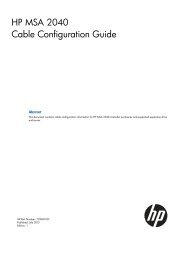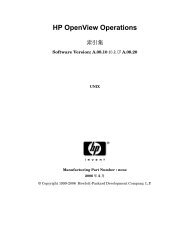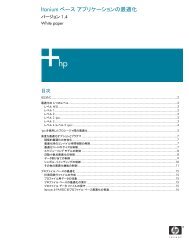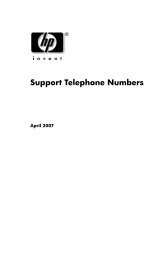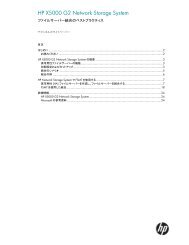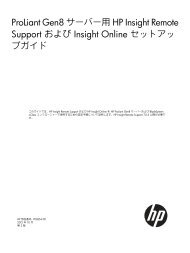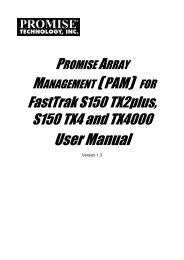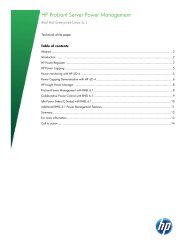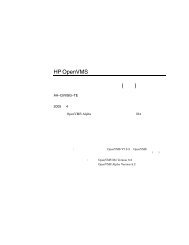HP ProCurve Wireless Access Point 420 - Hewlett Packard
HP ProCurve Wireless Access Point 420 - Hewlett Packard
HP ProCurve Wireless Access Point 420 - Hewlett Packard
You also want an ePaper? Increase the reach of your titles
YUMPU automatically turns print PDFs into web optimized ePapers that Google loves.
Modifying Radio Settings<br />
<strong>Access</strong> <strong>Point</strong> Configuration<br />
Modifying Radio Settings<br />
The access point can operate in three standard modes, IEEE 802.11b only,<br />
802.11g only, or a mixed 802.11b/802.11g mode.<br />
Not e Both the IEEE 802.11g and 802.11b standards operate within the 2.4 GHz band.<br />
In a wireless LAN environment there can often be interference from other<br />
2.4 GHz devices, such as cordless phones. If you experience poor wireless<br />
LAN performance, try to limit any possible sources of radio interference<br />
within the service area.<br />
The IEEE 802.11g standard is an extension of the IEEE 802.11b standard and<br />
enables client stations with 802.11b wireless network cards to associate to an<br />
802.11g access point. However, the 802.11b standard uses Complementary<br />
Code Keying (CCK) modulation technology to achieve a communication rate<br />
of up to 11 Mbps, whereas 802.11g uses Orthogonal Frequency Division<br />
Multiplexing (OFDM) to reach rates of up to 54 Mbps. (Note that the 802.11g<br />
standard is backward-compatible with 802.11b and therefore includes the<br />
ability to use OFDM or CCK modulation.) To support both 802.11g and 802.11b<br />
clients, the access point has to first communicate with all clients using CCK<br />
and only switch to OFDM for data transfers between 802.11g-compatible<br />
clients. This mechanism has the effect of reducing the maximum throughput<br />
for 802.11g clients in the network.<br />
Working in its mixed “b/g” mode, the access point will experience reduced<br />
data throughput, even if there are no 802.11b clients active in the network. To<br />
achieve a higher throughput, you can set the access point to operate in 802.11gonly<br />
mode, which ignores all 802.11b clients in the service area.<br />
Not e Both the IEEE 802.11g and 802.11b standards operate within the 2.4 GHz band.<br />
If you are operating in “802.11g-only” mode, any 802.11b devices in the service<br />
area will contribute to the radio frequency noise and affect network performance.<br />
Web: Modifying the Radio Working Mode and Settings<br />
The Port/Radio Settings window on the Configuration tab provides the basic<br />
settings for the access point’s radio operation.<br />
The access point’s radio channel settings are limited by local regulations,<br />
which determine the number of channels that are available.<br />
5-37



